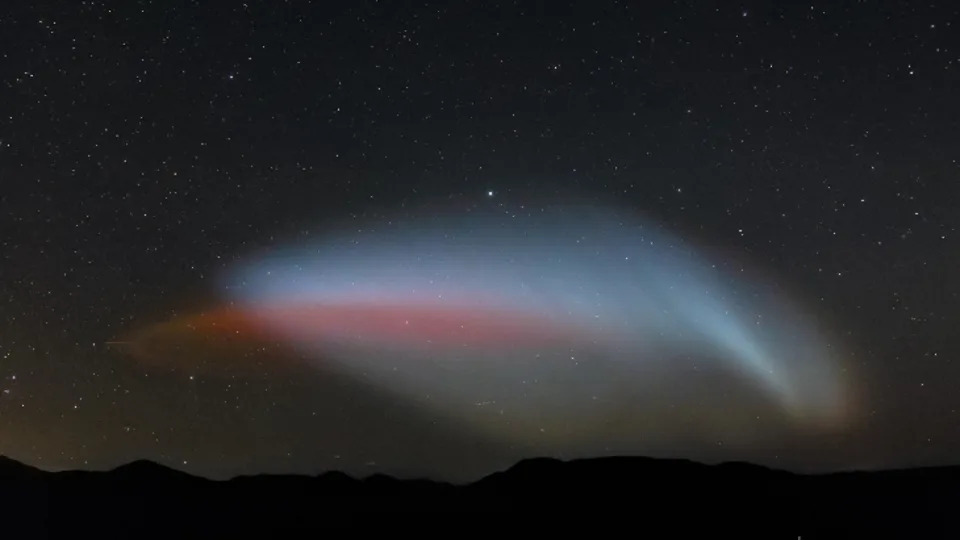Harry Baker
Wed, July 26, 2023

A large red streak shines across the night sky
A SpaceX rocket recently punched a hole in Earth's upper atmosphere while venturing into space, leaving behind a blood-red streak of light in the sky similar to an aurora.
The Falcon 9 rocket, which was carrying 15 SpaceX Starlink satellites into orbit, lifted off from Vandenberg Space Force Base in California on July 19 at around 9 p.m. PDT, according to Live Science's sister site Space.com. As the rocket rose into the upper atmosphere, its exhaust plume became illuminated by sunlight, which created a stunning spectacle seen across California and parts of Arizona.
But what followed was even more awe-inspiring.
"After the rocket passed overhead, a red fluorescent glow expanded southward and crossed over with the Milky Way [in the sky]," Jeremy Perez, a photographer based in Flagstaff, Arizona, told Spaceweather.com. Perez captured several epic shots of the "fluorescent red glow" from his vantage point at the San Francisco Volcanic Fields, located north of Flagstaff. The light show lasted around 20 minutes, he added.
The unusual red light was the result of the rocket disrupting the ionosphere, the part of Earth's atmosphere where gases are ionized, or lose electrons, and turn into plasma. The ionosphere stretches between roughly 50 and 400 miles (80 and 644 kilometers) above Earth's surface, according to NASA. This is a previously known phenomenon, but the latest episode is one of the most vivid examples to date, Spaceweather.com reported.
Related: SpaceX's Starlink satellites are leaking radiation that's 'photobombing' our attempts to study the cosmos

A red streak of light surrounidng by bright white light in the night sky
"Ionospheric holes" are created when a rocket's second stage burns fuel between 124 and 186 miles (200 and 300 km) above Earth's surface, Jeffrey Baumgardner, a physicist at Boston University, told Spaceweather.com. At this height, the carbon dioxide and water vapor from the rocket's exhaust cause ionized oxygen atoms to recombine, or form back into normal oxygen molecules, which excites the molecules and causes them to emit energy in the form of light, he added.
This is similar to how auroras form, except the dancing lights are caused by solar radiation heating up gases rather than recombining them. The holes pose no threat to people on the surface and naturally close up within a few hours as the recombined gases get re-ionized.

A rocket plume gets illuminated by sunlight
Scientists have known that rockets can trigger these sorts of effects since at least 2005, when a Titan rocket triggered "severe ionospheric perturbations" that were equivalent to a minor geomagnetic storm. But they are becoming more common.
related stories
—Geomagnetic storm sends 40 SpaceX satellites plummeting to Earth
—Disastrous SpaceX launch under federal investigation after raining potentially hazardous debris on homes and beaches
—Rogue rocket about to smash into the moon is from China, not SpaceX, experts say
In August 2017, a Falcon 9 rocket created a hole four times bigger than the state of California, the largest ever recorded. And in June 2022, another Falcon 9 punched a hole over the U.S. East Coast, sparking a display of red lights from New York to the Carolinas that many observers mistook for the northern lights, Spaceweather.com reported at the time.
As the number of rocket launches, particularly by private companies such as SpaceX, continues to increase in the coming years, it is likely that these ionospheric holes and their associated light shows will become much more common, according to Spaceweather.com.
No comments:
Post a Comment